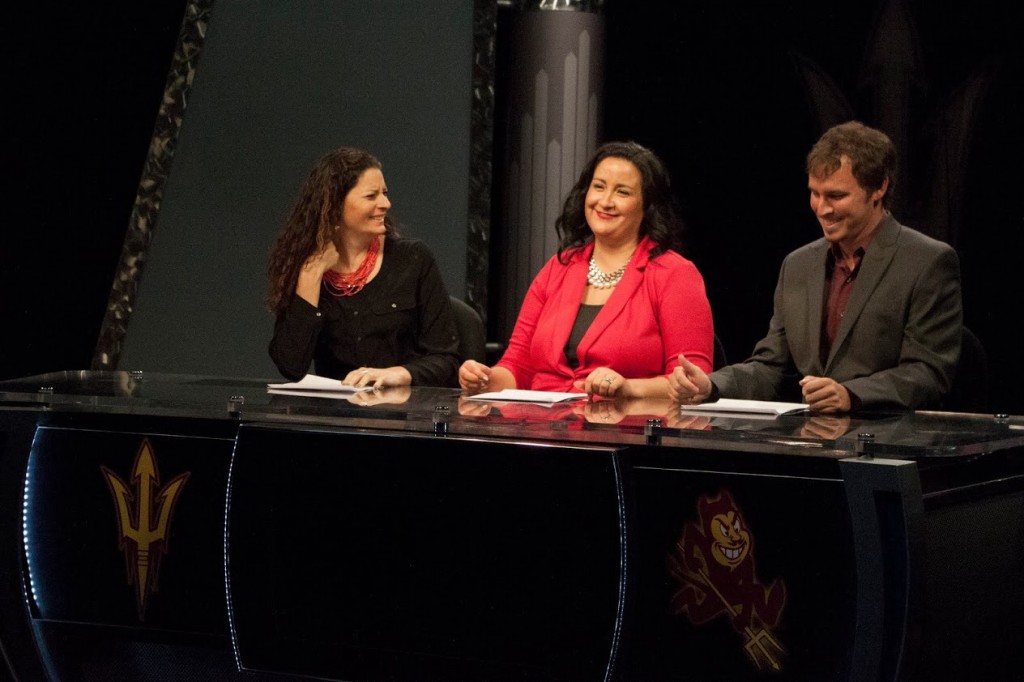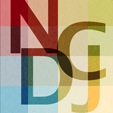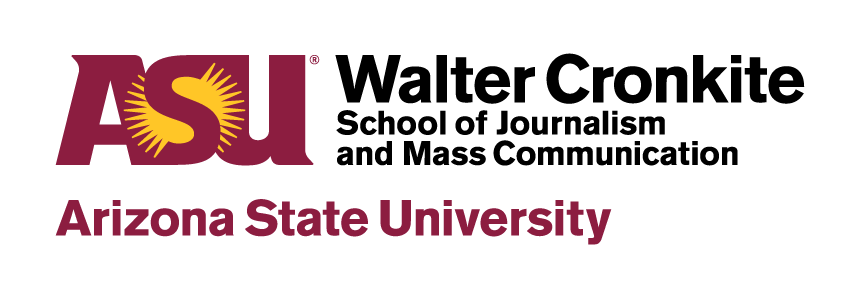By Cassidy Trowbridge
For Peyton Gallovich, a course in American Sign Language at ASU evolved into something more than just an opportunityto learn a new language.
It inspired the student at the Cronkite School to develop a professional news program that connects the deaf and hearing communities


“I have watched a lot of (television) news since it’s my major, and I would turn on the captions and they lagged or were inaccurate,” she said. “I just felt like maybe there was something I could do that could bridge the gap.”
In spring 2014, Gallovich approached her sign language instructor Dyan Kovacs after class with an idea for the Deaf and Hearing Network, which combines the use of signing, voices and captions into one show.
“Peyton was my student and shares the same passion as I do with ASL,” said Kovacs, who also serves as a DHN sports anchor. “She came (up) with the idea of DHN, which I thought, ‘Yes —that is what we need in our community.’”
The show’s first run included eight episodes and aired on area public television DeafTV.com and DeafVideo.tv. Production takes place at the Cronkite School in a state-of-the-art television studio. Gallovich works behind the scenes serving as a producer, working on all of the pre- and post-production work.
In March 2014, the 12-person crew was hard at work preparing show’s sixth episode. Gallovich was focused, putting the finishing touches on the pre-production of the show, while the news anchors, who are deaf, rehearsed their lines. After taping,Gallovich spent the next two days editing the video and adding the voice-overs to the show.
The finished product was a 15-minute program that included coverage on the crisis in Ukraine, the missing Malaysia Airlinesplane and the NCAA Final Four.
Gallovich said the program also highlights important news to the deaf community. The staff did an in-depth story on a housing dispute between a Tempe, Arizona, residential community for the deaf and the U.S. Department of Housing and Urban Development.
Melissa Huber, a DHN news anchor, said she is proud of the staff, which consists of Cronkite students and members of the deaf community, including ASL teachers and students.
“It is always amazing to see how well everyone comes together and works together to deliver amazing shows,” said Huber, who works as a counselor at the Phoenix Day School for the Deaf. “The shows, when they are posted and delivered to the community — that is also a favorite part of working at DHN —seeing the fruits of our labor, and how we were all able to create something beautiful.”
According to the National Institutes of Health, more than 36 million adults report some form of hearing loss. Additionally, two to three out of every 1,000 children in the U.S. are born deaf or hard-of-hearing. Gallovich said the Deaf and Hearing Network has opened her up to an entire culture.
“Like most hearing people, I had no contact with the deaf community prior to taking a sign language class,” she said. “Soonce I got there and learned about the culture and the people, Ilearned it’s not a disability. You just have to do things a little differently.”
The Deaf and Hearing Network has received tremendous support from both the deaf and hearing communities. The show has racked up thousands of views on its YouTube page, and it has a strong and following on social media.
“We have been receiving a very positive response from the community,” Kovacs said. “Actually — not only the deaf community but the ASL community — ASL interpreters, ASL students, Children of Deaf Adults (International) and many non-ASL users have expressed their awe at the shows.”
Gallovich said the Deaf and Hearing Network plans to begin taping its second season during the fall 2014 semester at ASU.In the meantime, the crew is working to build the show’s following by reaching out to national deaf organizations.Gallovich said she hopes the program continues to grow and make a difference.
“My whole goal was to make an impact, and that’s actually happening,” she said. “… This is my way to get involved and meet people I might not normally see.”

